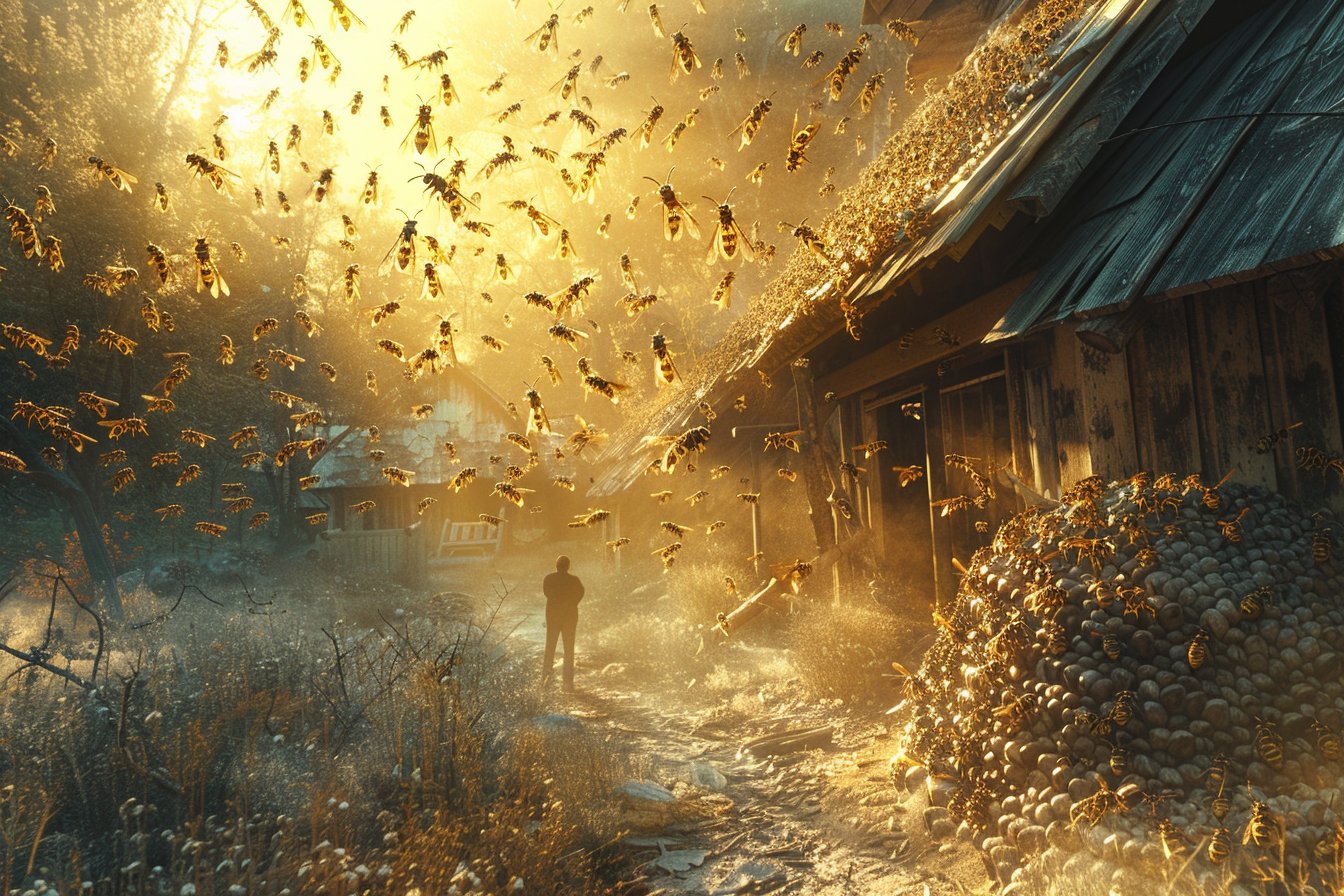Wasps, often unloved insects, are nevertheless essential players in our ecosystem. They can be formidable for their predators or the humans who are near their nest, but they also participate in the proper functioning of nature through pollination and the regulation of other harmful insects. So how do you react to a Wasps nest ? Should we consider their presence as a real hazardor is it possible to consider a cohabitation peaceful by taking certain precautions ? In this article, we will study the different aspects allowing us to understand this problem.
Understanding how wasp nests work
To better understand the question, it is first necessary to know these fascinating constructions that are wasp nests. They are intended to shelter the colony and protect its occupants, while ensuring a constant and ideal temperature for their development.
The structure of the nest
The nest is primarily made of a mixture of cellulose and saliva, giving it its characteristic cardboard-like texture. The hexagonal cells that make it up are used to house eggs, larvae and nymphs, depending on their stage of development. The nest is regularly enlarged by the workers to meet the needs of the colony.
The hierarchy within the colony
Each wasp colony includes three types of individuals: the queen, males and workers. The queen, the only fertile female, has the mission of laying eggs to ensure the survival of the colony. The main role of males is to fertilize the queen and will die shortly after mating. As for the workers, they are sterile females who work tirelessly to feed the colony, take care of the larvae and build the nest.
Potential dangers of a wasp nest
Even though wasps actively contribute to our ecosystem, they nonetheless remain potentially dangerous to humans. Here are some of the main associated risks:
- Bites: a wasp can sting several times (unlike the bee) and inject its venom with each sting. Although generally benign, a wasp sting can cause serious allergic reactions, even fatal for some people.
- Aggression: wasps are particularly protective of their colony and can be aggressive if they feel threatened. It is therefore strongly recommended not to attempt to approach a nest without taking adequate precautions.
- Nest location: a nest located near a home, a playground or in a busy place can represent a real danger for people traveling there.
Tips for considering cohabitation with a wasp nest
While it is undeniable that the presence of a wasp nest involves risks, there are nevertheless different options aimed at minimizing these and promoting peaceful cohabitation between man and the insect.
Take into account the specific situation of each nest
It is important to assess the actual threat posed by a wasp nest based on its location, size, the species involved (some being more aggressive than others) and the individuals likely to be at risk. (children, people with allergies). In some cases, it will then be preferable to call in a professional to eliminate the nest, while in other situations, simple regular monitoring may be sufficient.
Adopt appropriate behaviors
When the decision is made to live with a wasp nest rather than trying to eliminate it, it is appropriate to adopt some good practices:
- Avoid approaching the nest or touching it;
- Keep a safe distance;
- Do not try to chase away wasps, as a sudden movement can encourage them to sting;
- Keep the premises clean so as not to attract wasps in search of food (disposal of waste, airtight sealing of bins, cleaning of tables and floors after a meal outside).
Use preventive and/or natural repellent solutions
Ecological methods exist to keep wasps away without harming their survival. Among them, we count:
- The use of essential oils such as lavender, eucalyptus or geranium, the smell of which is known to repel wasps;
- The installation of attractive traps at a distance from the nest, allowing unwanted individuals to be captured without affecting the colony;
- Planting melliferous plants around the area to be protected, in order to create an alternative source of food for the wasps.
Although wasp nests can represent a danger to humans, it is not always necessary to resort to their destruction. A prior assessment of each situation and the respect of certain precautions often make it possible to envisage peaceful coexistence with these insects which are so essential to our environment.

